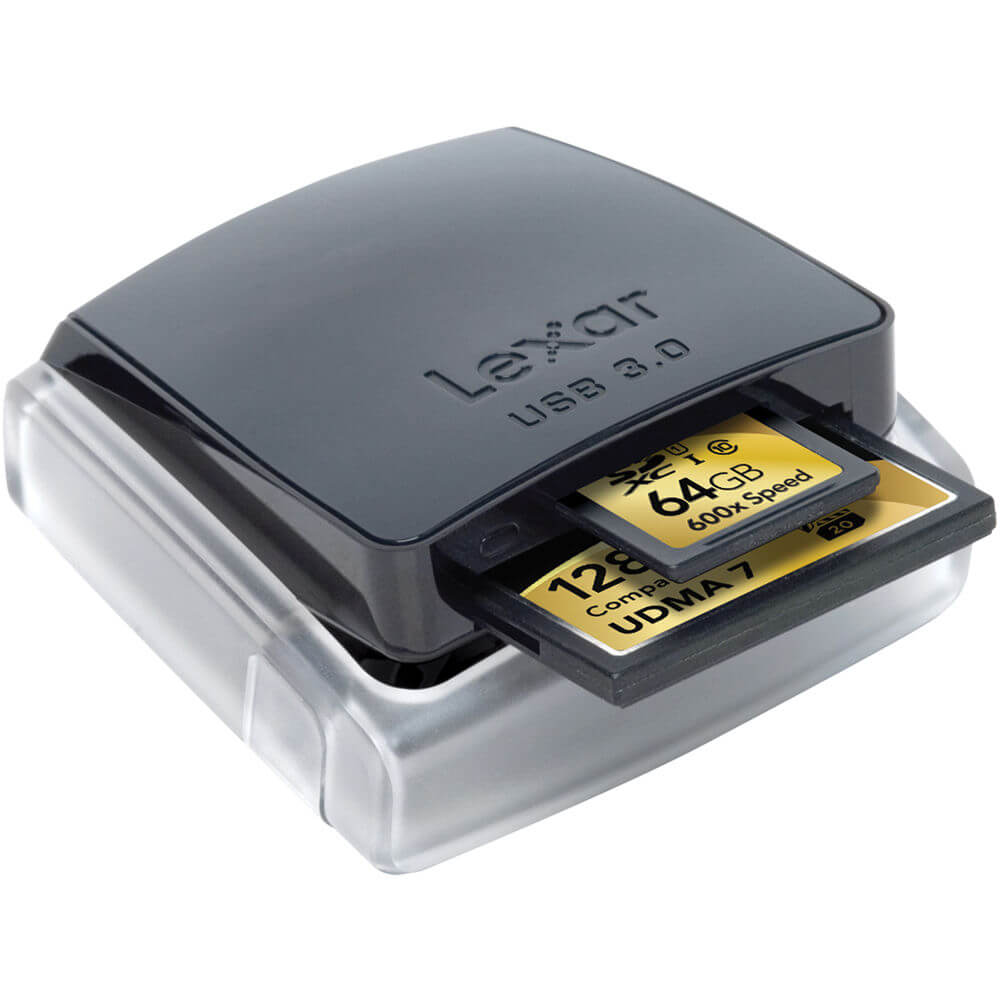Why You Should Use a Memory Card Reader
Today’s Post by Jason Anderson with Joe Farace
One of the most surprising things that I hear from photographers is that many of them tether their cameras to their computers for transferring photos. While tethering is always an option, there are risks to doing it that way. Whenever I hear this, I take a few minutes and share some of the reasons on why it’s better to use a card reader than to import from your camera such as:
- Speed. Card readers are designed to transfer data off a card and onto a computer. No camera firmware is required, no menus need to be loaded and no power is needed. It’s a simple plug-and-play process and you can increase transfer speeds significantly by taking this route over camera direct transfers. With the super-fast cards available today, you’ll see a decrease in transfer times
- Reliability. Because cameras have so many working parts and components, the process of connecting them to a computer take a certain toll and if the cable is frayed or a connection or power is lost, you can risk losing and/or corrupting your images during the transfer process.
- Conserve Battery drain. In the summer, this is less of an issue but with lower temps comes decreased battery time. It’s important to remember that plugging a camera into a USB port isn’t like plugging in a phone or other devices. Plugging in doesn’t charge the battery, it discharges the battery.
 So, what kind of card reader should you get. Joe just started using Lexar’s Professional USB 3.0 Dual-Slot Reader ($34.95) that supports data transfer rates of up to 500MB/s or five times faster than USB 2.0. With a fast memory card, such as 1000x, you can achieve a maximum read speed of 150MB/s. The Lexar Pro USB 3.0 reader allows for concurrent transfers. Yes, it will read simultaneously SD and CF cards and enable card-to-card transfers. An LED lights indicating when a transfer is complete.
So, what kind of card reader should you get. Joe just started using Lexar’s Professional USB 3.0 Dual-Slot Reader ($34.95) that supports data transfer rates of up to 500MB/s or five times faster than USB 2.0. With a fast memory card, such as 1000x, you can achieve a maximum read speed of 150MB/s. The Lexar Pro USB 3.0 reader allows for concurrent transfers. Yes, it will read simultaneously SD and CF cards and enable card-to-card transfers. An LED lights indicating when a transfer is complete.
If you don’t have USB 3 yet, it’s backwardly compatible with USB 2.0 devices. It supports UDMA 7 cards, which feature accelerated speeds. Compatible card formats include CompactFlash, SDXC / SDHC UHS-II, and SD.
Please visit Jason over at his website for more useful tips, tricks, articles, insights and more on how to make and take better photographs.



